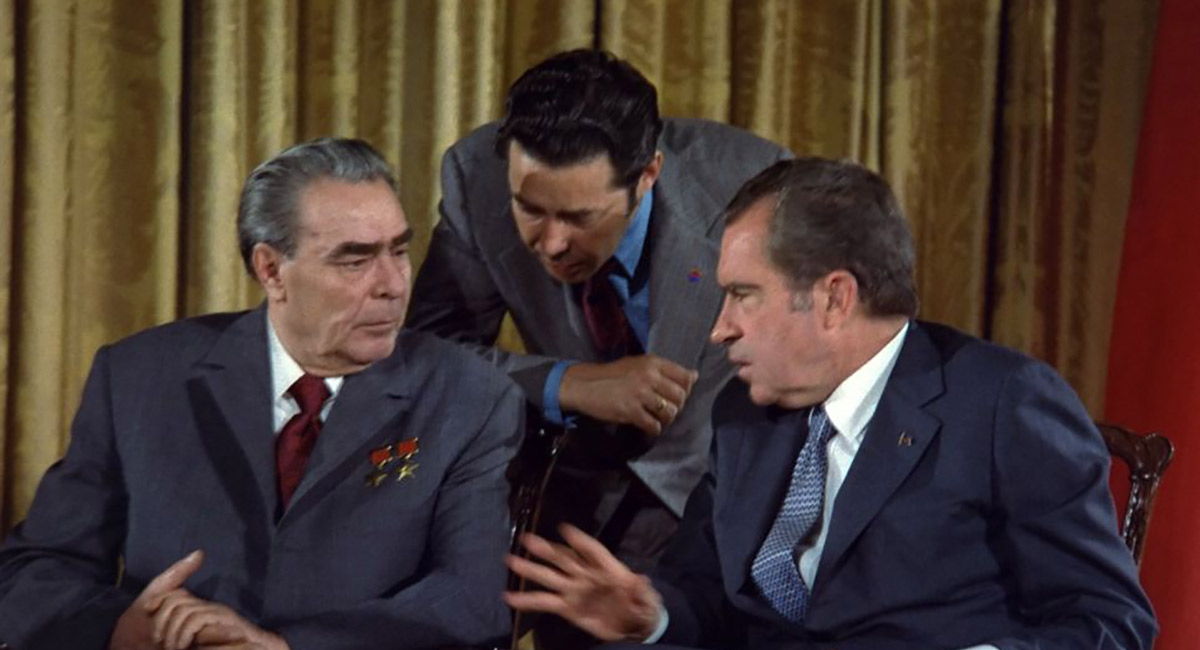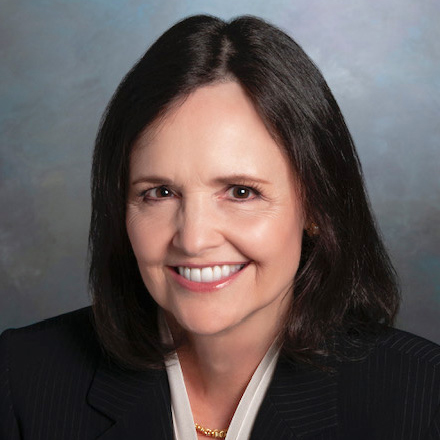President Trump is planning to meet one-on-one with President Putin when the two leaders get together on Monday in Helsinki, Finland, before having an expanded meeting to include top advisers.
While some former officials have warned that being alone with Putin is ill-advised—given the former KGB officer’s presumed skill at duping his adversaries—at least one former U.S. president would applaud the move.
Richard Nixon met one-on-one with Soviet General Secretary Leonid Brezhnev in the White House on June 18, 1973, the day before their Washington summit officially began, with only a single translator present.
Nixon told Brezhnev that it was essential that their two nations, where possible, work together to solve problems and that the personal relationship between Brezhnev and himself was key: “If we decide to work together we can change the world.”
Nixon’s foreign policy accomplishments as president—which included two landmark arms control treaties that helped lower Cold War tensions with the USSR—were largely overshadowed by his later resignation from office after Congress began impeachment proceedings in reaction to the Watergate scandal.
But Nixon’s canny perceptions about the economic and political pressures facing other world leaders and the importance he attributed to personal diplomacy should not be undervalued.
Some 20 years after his own debacle, Nixon took up the cause of supporting Boris Yeltsin and Russia’s challenging transition to democracy and a free-market economy. In a March 1992 memo to President George H.W. Bush entitled “How to Lose the Cold War,” Nixon wrote:
“We must remember that while Russia is no longer communist it is still Russian with a centuries old tradition of expansionism and a people who during times of trouble tend to turn to a strong hand—even dictatorship for leadership.”
The prospect of failing to productively seize the moment in the wake of the Soviet collapse compelled Nixon to urge America’s leaders to engage with their Russian counterpart:
“Russia was and is a great power and the Russian-American relationship is the most important relationship that the United States has with any nation in the world,” he stated in March 1994. “First, Russia is the only nation in the world that has the capability to destroy the United States of America. Second, Russia’s cooperation is indispensable in dealing with a number of problems like the current situation in the Mideast.”
Third—and most important, Nixon believed—was that the success or failure of political and economic freedom in Russia would have a profound effect in the world on would-be dictators:
“If freedom succeeds in Russia, it means that freedom will be the way of the future. Therefore we should work together to make it succeed.”
Shortly before he died in April 1994, Nixon sent a lengthy letter to President Clinton about planning for a post-Yeltsin era. Clinton told aides that he had never read anything as brilliant on the subject. “I was incredibly impressed with the energy and rigor he brought to analyzing this issue.”
So what can we say today about whether freedom in Russia has succeeded? What is America’s role, if any? Softer touch or stronger hand?
The European Bank for Reconstruction and Development (EBRD) was specifically established in April 1991 to finance the transition of Russia and Eastern Europe toward democracy and open-market economies. The United States was a founding member and still owns 10 percent of its shares—the EBRD’s single largest shareholder.
Following its annexation of Crimea, new funding for Russia has been frozen. As U.S. director of the EBRD, appointed by President Trump and confirmed by the Senate, the historical irony is not lost on me.
But that doesn’t invalidate the strategy of trying to engage with Russia to accomplish objectives in our own nation’s interests.
“When we have differences, we should not assume that they will be overcome by a good personal relationship even at the highest level,” Nixon acknowledged. “They can only be overcome if we recognize them and negotiate in a pragmatic way.”
At the same time, Nixon sought to ratchet down both the danger and the expense inherent in permanent nuclear rivalry: “If, for example, Yeltsin is replaced by a new aggressive Russian nationalist we can kiss the peace dividend good-bye.”
President Trump has an opportunity—he created it single-handedly—to explore new approaches to long-simmering problems with President Putin and to hammer out innovative solutions. Thanks to heightened defense spending under the Trump administration, we have the bigger hammer.
But the benefits to both nations would be more than worthwhile. As Trump has observed: “If we got along with Russia, that would be a good thing—not a bad thing. And just about everybody agrees with that, except very stupid people.”
Nixon, whose prescience about Russia borders on clairvoyance, would surely agree. And then there’s this: “Dear Donald,” began Nixon’s 1987 letter to the businessman who would be inaugurated as U.S. president in 2017.
Citing the impressions of his wife, Pat, who had watched Trump on a television talk show, Nixon conveyed the prediction that “whenever you decide to run for office you will be a winner!”









